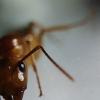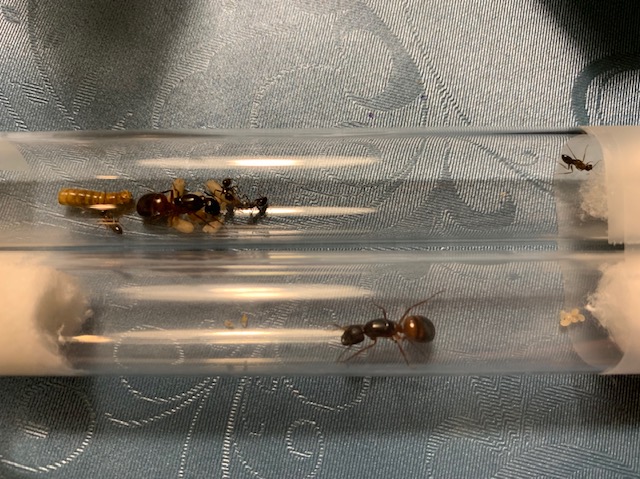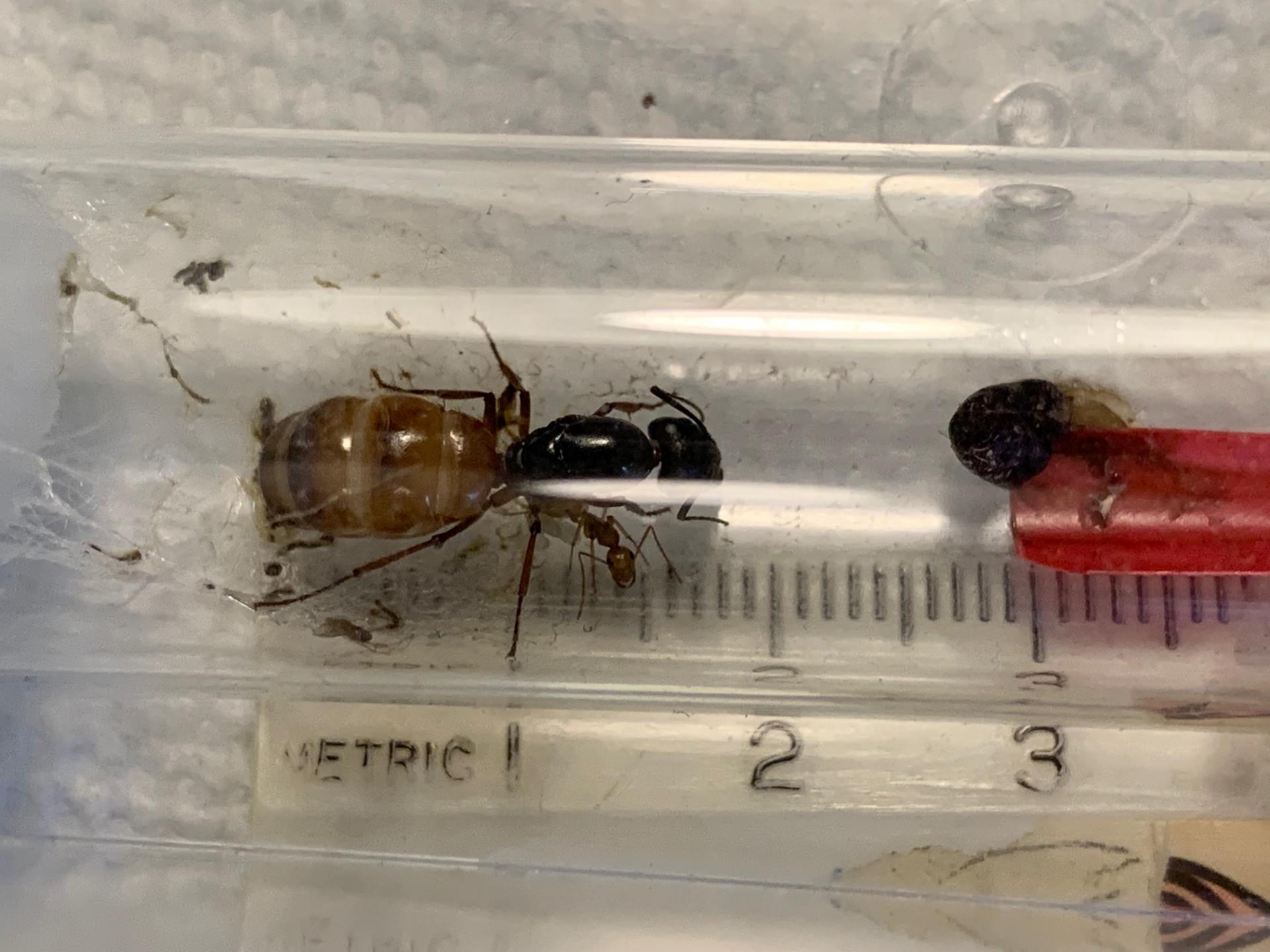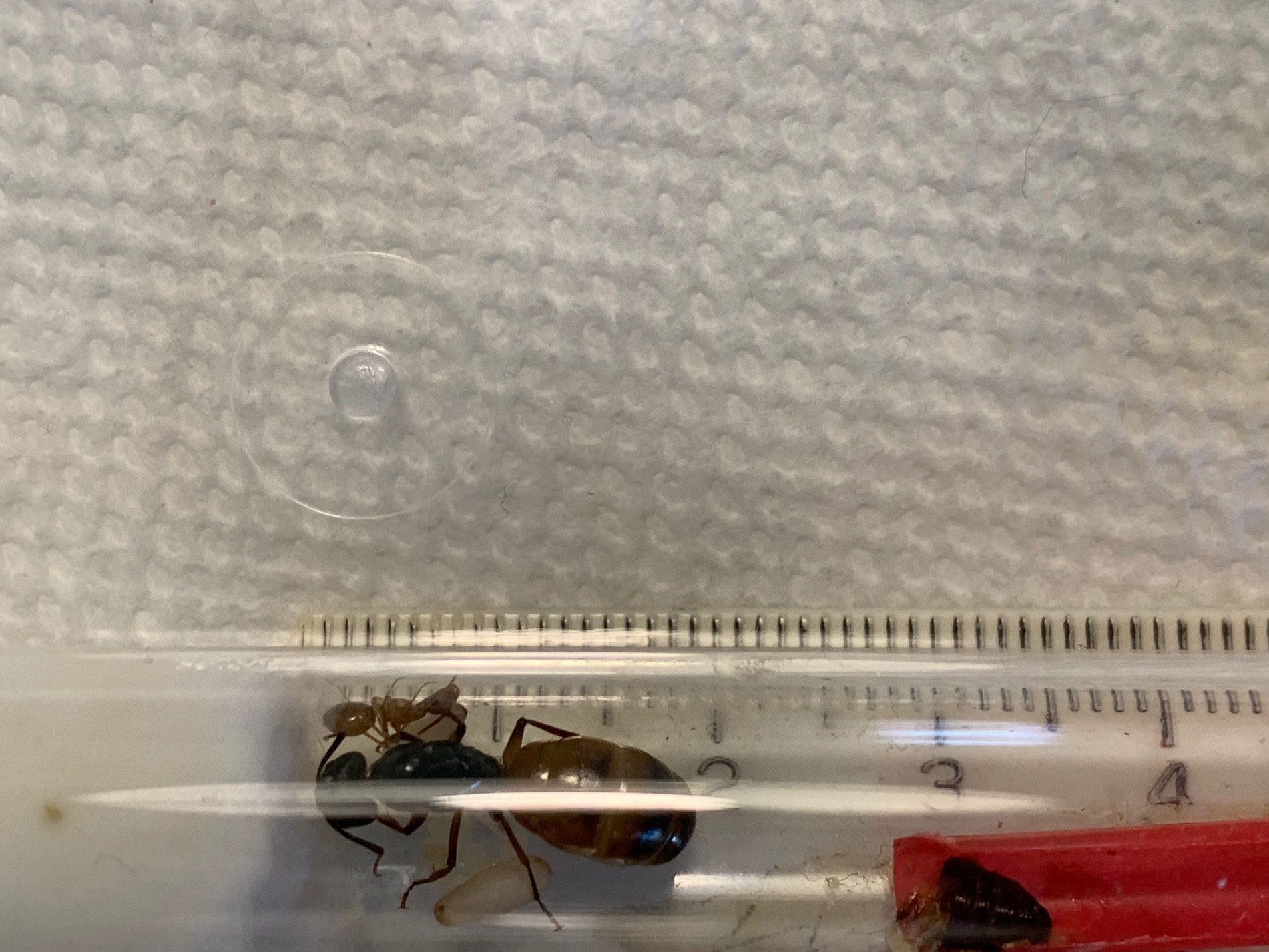2020.7.15
An online friend was giving away ants so here's my new list of Camponotus ants, in total, with updates.
C. fragilis is in its own journal.
C. sansabeanus 1: Her last worker died! 
 I put in 2 little brood from C. sansabeanus 2 and what happened? Mean Queen freaked out, ran out of her tube, and is trying to escape the tub.
I put in 2 little brood from C. sansabeanus 2 and what happened? Mean Queen freaked out, ran out of her tube, and is trying to escape the tub.
C. sansabeanus 2: Has nanitics and brood. I adjusted their cotton and accidentally caused some minor flooding. The nanitics didn't seem very fast on the uptake and were not good at rescuing brood. This is when I took a couple little ones to give to C. sansa 1, who smelled the brood and ran off screaming.
C. vicinus (low) 1: Gave them a fruit fly. They freaked out, killed it, kept killing it, sprayed more, attacked more, bit it, sprayed more, freaked more, etc.
C. vicinus (low) 2: The queen who lost her brood. She is thin but faithfully tending her brood. One very small pupa and a smaller larva.
NEW ANTS:
C. vicinus (bi-color) orphan: Arrived with queen dead 
 Beautiful BIG bi-color vicinus with a light thorax (instead of light gaster). I'm SO bummed the queen was dead. She leaves behind a healthy nanitic and some brood.
Beautiful BIG bi-color vicinus with a light thorax (instead of light gaster). I'm SO bummed the queen was dead. She leaves behind a healthy nanitic and some brood.
C. semitestaceous "dud"? queen: This is a queen who is suspected to be a dud. She looks like a small sansabeanus, with dark head and thorax and lighter colored gaster. Arrived with 2-3 little eggs that she is definitely NOT taking care of. Based on photo, apparently she's gotten quite thin.
Crazy experiment with vicinus orphan and semi-dud: I put the C. vicinus orphan tube and C. semi-dud queen in the same tub, open.
C. quercicola: HUGE big black-ish queen. She looks bigger than my sansabeanus queens. She came with a bunch of healthy looking huge nanitics and brood. I offered them some ant nectar and some bloodworms soaking in ant nectar and they freaked just a bit, sipped nectar, and then seemed to ignore it.
(And I got 1 Liometopum occidentale colony and I'm running a weird experiment on my Prenolepis, but those are stories for different journals.)
Will add photos soon.
Edited by OhNoNotAgain, July 15 2020 - 10:24 PM.
Formiculture Journals::
Veromessor pergandei, andrei; Novomessor cockerelli
Camponotus fragilis; also separate journal: Camponotus sansabeanus (inactive), vicinus, laevigatus/quercicola
Liometopum occidentale; Prenolepis imparis; Myrmecocystus mexicanus (inactive)
Pogonomyrmex subnitidus and californicus (inactive)
Tetramorium sp.
Termites: Zootermopsis angusticollis
Isopods: A. gestroi, granulatum, kluugi, maculatum, vulgare; C. murina; P. hoffmannseggi, P. haasi, P. ornatus; V. parvus
Spoods: Phidippus sp.




















